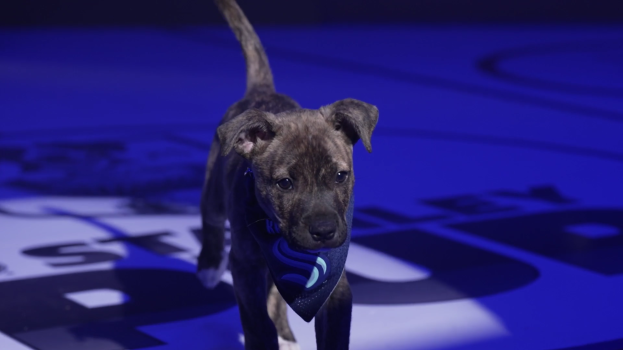For generations to come, 2020 will be remembered as a year of innovation, reinvention and collaboration – among businesses, people, even governments. Strategy is taking a page out of the books of many others during the crisis, and doing its part to help organizations today survive for tomorrow.
Our new “Cause Doctors” is the cousin of “Brand Doctors,” a content series from strategy’s archives that enlisted marketing and advertising vets to devise solutions for a brand facing new and ongoing struggles. Now, we’re turning experts’ attention to vulnerable non-profits, which are suffering from major disruptions that hinder their ability to fund life-saving and life-changing programs.
Strategy asked a dozen creatives, marketers, academics, consultants and strategists to offer their guidance. And we’ll share their recommendations, one cause brand at a time, throughout the month. So check back here regularly, and make sure to visit CauseConnect to find out how you can personally give (and get) help.
- Non-profit: Good to be Good Foundation
- Backstory: The grassroots foundation was founded in Toronto in 2016 by artist and philanthropist Char San Pedro. She founded Good To Be Good to support underserved communities living in poverty. It’s mission is also strongly tied to promoting gender equality and social justice.
- The challenge: While many are able to safely quarantine in their homes, not everyone is as fortunate. There are vulnerable men and women who lack basic supplies, let alone a roof over their head. Good To Be Good’s current work involves local aid relief for those affected by COVID-19. It’s accepting new and unused donations from the local community, supplying non-perishable and hygiene items to homeless shelters. But how does it get people to donate when it faces low awareness at a time when the world’s attention is divided?
Noel O’Dea, Target
The Diagnosis:
Donation Interruptus, caused by a nasty COVID-19 virus which triggered safe distancing reaction, shutting down all live music and event fundraising functions.
The Prescription(s):
We love this brand name. It instantly connects to our altruistic soul, to the good person we all deeply want to be. In a world gone wrong, it’s perfect for inspiring people to, well, do good.
With that said, here are our 10 prescriptions for short-term and long-term health of the Good To Be Good brand:
1. ‘Donate’ Button. Make it easy to donate. Amputate the website ‘Form.’ Install an ecommerce plug-in such as ‘Give WP’ to enable instant donations via credit card or PayPal. Or use ‘Canada Helps,’ Interac etransfers, or an old school 1-800 line. Because good intentions evaporate quickly.
2. Add ‘Sign Up’ Button. To build a community of supporters and brand evangelists, communicate frequently, provide recognition, and reinforce donation behaviour.
3. Simplify Website. Focus on visitors’ information needs. Make it easy. Put the important info upfront (what we do, where the money goes). Make every word count. Be simple, direct, and uncomplicated. Amputate flowery generalizations.
4. Be a Good Storyteller. Leverage the emotion and symbolism in your brand name. Tell stories – who you are, who you’ve helped, and how that’s made a difference. Speak simply, with humanity, versus in the lexicon of vision statements.
5. Expand Social Media. To tell your story, expand your audience, and strengthen tribal glue. Add “Donate” and “Sign-up” buttons.
6. One Cause. It’s impossible to know how, or for whom, our donations will be used. Focus on one problem. For example, safety is a basic human right. But no homeless person, or victim of domestic violence, has a safe place to go during the lockdown. Be known for one thing. Or not be known at all.
7. Virtually Good Ideas. Convert live events to online virtual experiences – like virtual concerts, comedy and open mic shows, and auctions. “Good to Go” sounds like a good title for a series broadcast on Instagram, Facebook, and YouTube. Add “Donate” button.
 8. Good to Be Good Hotel. Domestic violence is like a prison. So, partner with a hotel(s) to provide emergency shelter to women and children in need. “Donate today to help put a roof over someone’s head tonight.”
8. Good to Be Good Hotel. Domestic violence is like a prison. So, partner with a hotel(s) to provide emergency shelter to women and children in need. “Donate today to help put a roof over someone’s head tonight.”
9. Good to Go Concerts. Pivot, and convert concerts into the largest Instagram Live concerts in history. Add “Donate” button.
10. The Be Good Tanyas. Partner with this Vancouver group for virtual concerts and events. Tap into their fan community (and expand yours).
Repeat as necessary.
Noel O’Dea is the president of Newfoundland & Labrador-based agency Target.
Emma Hancock, Heroes & Villains Advertising
These days, its table stakes for any charity to be able to provide numbers on how much of a donation goes directly to the cause. Once you get to corporate level charity funding, it’s a whole other tier of reporting and financial management. Either way, with over 170,000 charitable and nonprofit organizations in Canada, there is heavy competition for all of us to donate: whether that’s money, goods or time.
Now we’re in the time of COVID, and making a financial donation (for many of us) seems like a privilege and volunteering is not even an option for most. So, we’re suddenly feeling like “the less fortunate” and vulnerable. Maintaining funding for charities that have already built their brand over years or decades will be hard – sustaining a charity that is new and unknown is near impossible.
Can you fundraise in a time like this? Probably the only sure bet would be the LCBO’s tactic of adding-on a donation at the time of purchase – which I only recall being done for the United Way and SickKids. So, without that option, right now needs to be about raising profile, not raising funds. A charity like Good To Be Good needs to focus on their story – what they do, for whom, and why – and maybe tapping into any available star power. Sowing the seeds now to prepare for the future with a strong case for “Why them.”
 Whether you’re a charity or a carton of milk, it comes down to the same challenge – being compelling enough to make a person take action. I only need to see a message once if it’s compelling to me. You can carpet bomb me with a thousand sponsored ads in my feed but if I’m not inspired then it won’t work. The marketing power of COVID itself is a perfect example of how to be clear and present, with a direct message that changes behaviour fast. I only had to see that message once.
Whether you’re a charity or a carton of milk, it comes down to the same challenge – being compelling enough to make a person take action. I only need to see a message once if it’s compelling to me. You can carpet bomb me with a thousand sponsored ads in my feed but if I’m not inspired then it won’t work. The marketing power of COVID itself is a perfect example of how to be clear and present, with a direct message that changes behaviour fast. I only had to see that message once.
Dear Good To Be Good: laying a foundation for your brand that is rooted in the “who” and the “why” would be paramount, especially as a charity. “Who” is behind all of this? “Why” are they doing this? From my own non-scientific research of Good To Be Good, the “who” is a woman with a humanitarian mission and the “why” is a direct result of the values her Grandmother instilled in her: how being charitable is a lifestyle not a one-time act. That’s compelling enough for me.
Emma Hancock is a partner at Toronto-based Heroes & Villains Advertising.
























